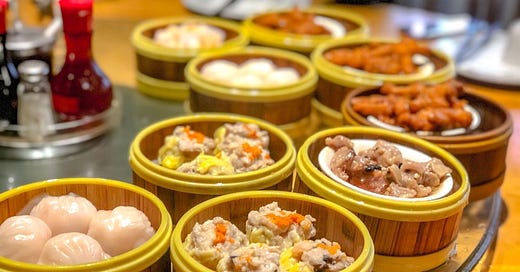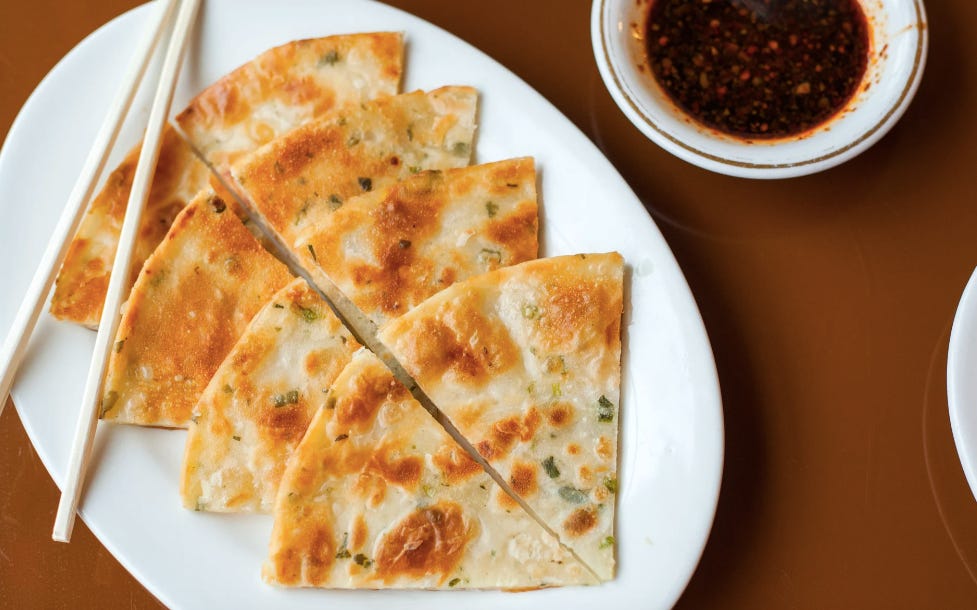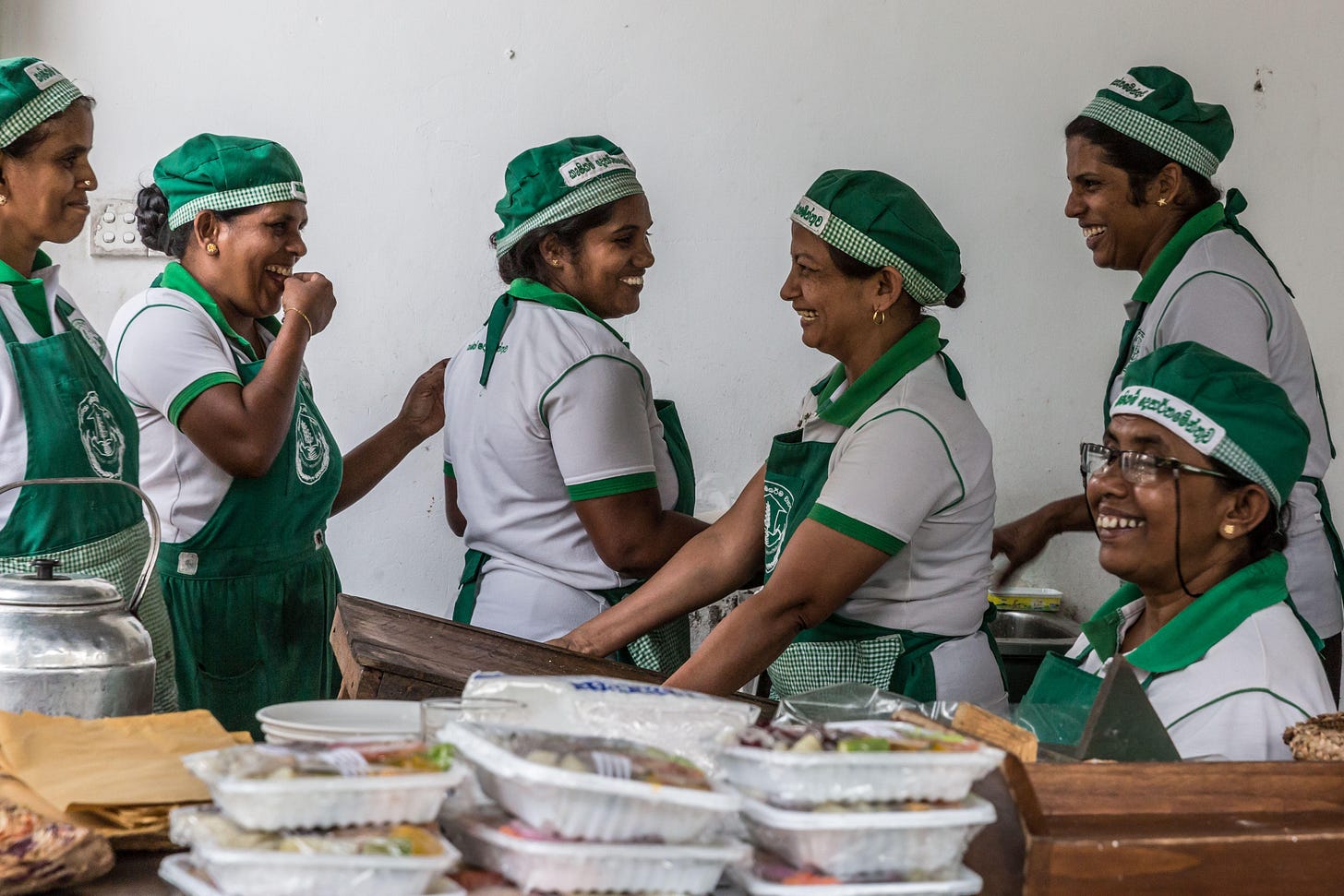If you enjoy the newsletter today, please forward it to someone who’d enjoy it, and tap the heart icon above, which will help me reach more readers. I appreciate your help, y’all!
Speaking of hearts! There’s a Valentine’s sale on Smart Mouth swag right now. It goes until February 15, but order by this Monday and I’ll make sure you get it by V Day. Order here.
Broccoli in Iceland with Jewells Chambers
I talked to the host of All Things Iceland about expat vs immigrant, explaining Trump to foreigners, and what we’re doing on social media - no, really, what are we doing. Plus, on being a vegan in Iceland, and the joys and sorrows of broccoli.
Consider signing up for a paid subscription. The money goes toward paying our contributors around the world and, starting in March, an extra edition every month. Substack sets the minimum at $5/month, so you can't give less than that,* but please feel absolutely free to give more. (You can choose any amount over $5 in the “supporter subscription plan” field.)
*If you would like to give less than $5, you can do that via Patreon, and it is very helpful and appreciated! You can give just $1/month, and you’ll get podcast episodes one week early.
Photo: Honey Court / Yelp
Eat Your Way Into the ID
By Brooke Jackson
Visitors to Seattle always put Pike Place Market and the Space Needle on their must-visit lists. But head a little further south and you’ll find one of the most culturally vibrant areas in the city: The International District.
Destroyed by the Great Seattle Fire of 1889, what was once known as Chinatown re-emerged from the ashes to establish a new foothold in the developing cityscape. Though Seattle has changed a shocking amount in the last two decades, vestiges of an older, more homespun city are most easily spotted in this neighborhood. Especially in the restaurants.
Throughout the last century, a plethora of locally-owned Asian restaurants have found a home here. However, business owners are facing a struggle previous generations knew, too.
Asian and Asian American residents have faced both blatant and passive racism in Seattle since the 1800s. While some would like to believe that this social injustice is a plague of the past, current events show that not to be true.
While almost every segment of the travel and hospitality industry has been drastically affected by COVID-19, Chinese restaurants in particular have been targeted as places to avoid due to the fact the virus originated from Wuhan, China.
Washington Department of Health secretary John Wiesman even had to explain that Asian people are not any more likely to be vectors for COVID-19 than anyone else, explaining “Viruses have no idea of what race or ethnicity you are, [race or ethnicity] has nothing to do with the transmission...This virus is not about one particular community."
But neighborhood businesses are still impacted by ignorance.
An article in the local food-focused outlet The Stranger reported that the Vietnamese restaurant Green Leaf, located in the International District, saw a revenue decline of 40% between February and March of 2020. The business’s owner said that colleagues in the neighborhood reported losing up to 60% of their usual income during the same period.
All this to say, whether you live in Seattle and can order delivery, or you’re planning a post-COVID trip, here is an itinerary of locally-owned Chinese restaurants in the International District to visit:
Photo: ZUMA Press, Inc. / Alamy Stock Photo
Hela Bojun Hala in Kandy, Sri Lanka
By Robbie Galvin
It was the distinctive "clickety-clack" noise of kottu (a dish made with sliced flatbread) being chopped that first enticed me into Kandy's Hela Bojun Hala. A few weeks after first noticing it, I began to automatically associate the sound with lunch.
Though it had lured me in with a familiar noise, the Hela Bojun Hala I visited in Kandy, Sri Lanka's second-largest city, is an endeavor strikingly different from any other kind of market in the country. Firstly, only women, dressed in identical green aprons, staff the neatly ordered stalls, each selling different Sri Lankan specialties. These range from breakfast treats like pitu (steamed cylinders of coconut and rice flour) and pungent kola kanba (a leafy green broth) to delicious jackfruit curries and mallung (a spicy salad of kale leaves mixed with shredded coconut and chilies). Notable too were the prices, clearly marked and remarkably low: 50 rupees (30 cents) for a delicious curry complete with fiery sambal (a mixture of onions and chilies) and egg hoppers (bowl-shaped pancakes with exquisitely delicate edges).
However, the most significant difference is that a Hela Bojun Hala is more than just a market. Translating directly into "traditional food court," the Hela Bojun Hala initiative was started by the Sri Lankan government in 2006 to provide culinary incubation spaces for women. Their purpose: to give female traders an alternative to competitive and male-dominated informal marketplaces while meeting a growing demand for high-quality fresh food. Today there are more than twenty Hela Bojuns across the island nation.
The markets are run by the traders themselves. As individual entrepreneurs, they rent their stalls from the department of agriculture after a period of training and accreditation. Pitching in to pay communal expenses, the women work as a collective while supplying their own equipment and produce. The prices are low, but both research and local sources show that through the Hela Bojuns, hundreds of women have achieved financial independence.
Despite being a regional leader when it comes to gender equality in education, Sri Lanka is still home to one of the world's most gender-imbalanced workforces. With an inherent expectation that married women don't work (and harassment of those who do), alongside highly unequal pay, women make up only 30% of the workforce. For now, the women working in Hela Bojuns across Sri Lanka serve as an exception to cultural norms. Perhaps their success will change the culture. 🇱🇰
More Food Reading:
Oh my goodness: if you’ve ever thought, “why don’t poor people know that healthy food is inexpensive?” you absolutely must read this. Share it around, too, because a lot of people don’t understand food microeconomics, and this is the best explanation I’ve ever read.
“Food grammar” is the term for what is culturally acceptable around eating - for instance, in Japan sandwiches can be made with fruit and cream, which is not proper American food grammar. (h/t reader Peter Stern)
This newsletter is edited by Katherine Spiers, host of the podcast Smart Mouth.
A TableCakes Production.
Want to contribute? Here are the submission guidelines.








